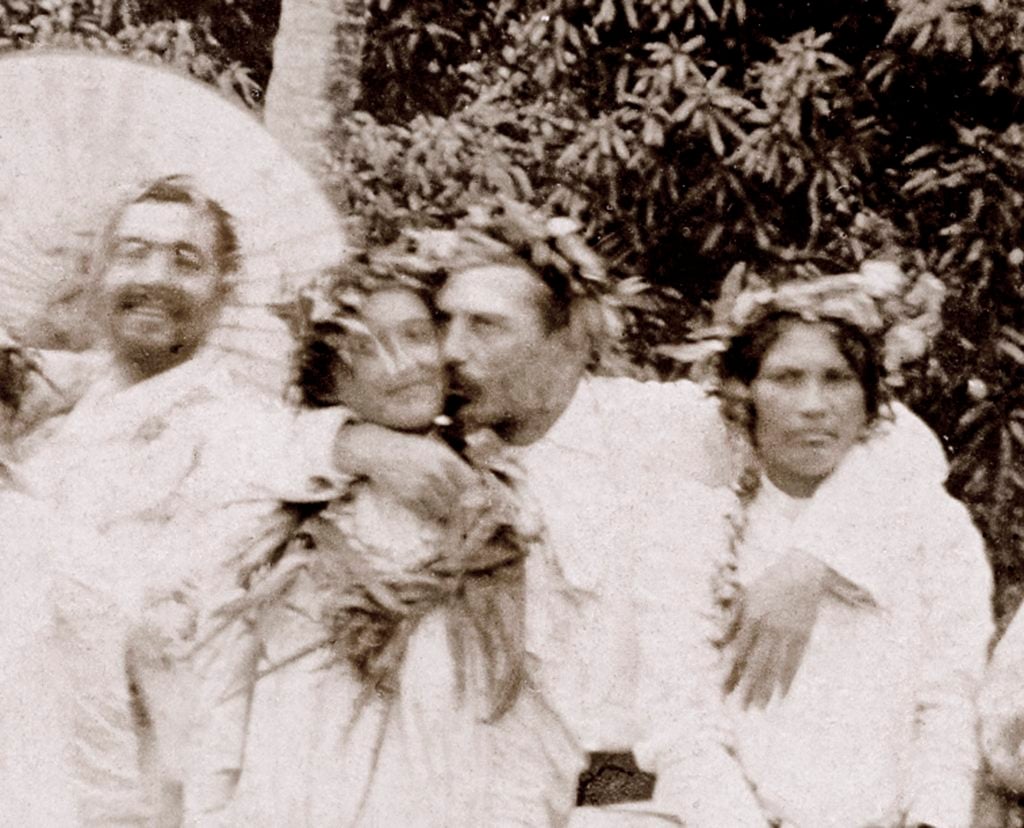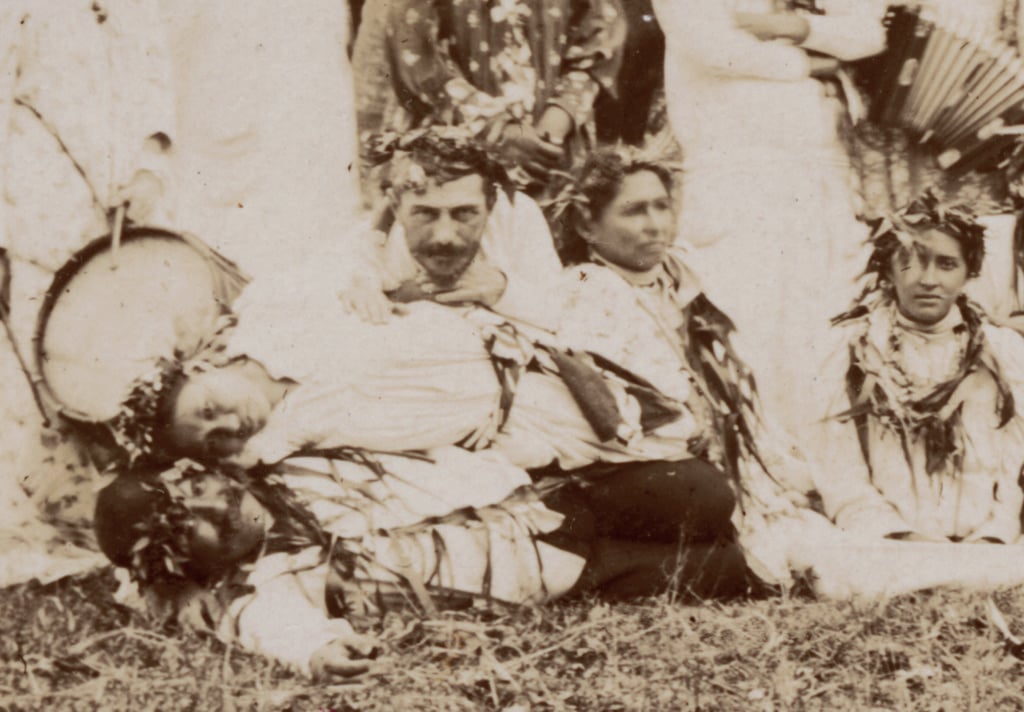Art World
Do These Photos Show Paul Gauguin and His Tahitian Muse?
These may be the only known photos of the artist in Tahiti.

These may be the only known photos of the artist in Tahiti.

Henri Neuendorf

Aside from what we learn through his own paintings and writings, little is known about Paul Gauguin’s time in Tahiti, clouding the artist’s exploits in the South Pacific in a self-eulogized mystery.
However the discovery of the only two known photos purportedly depicting Paul Gauguin during his Tahitian years offers fascinating insight into the artists life and character.
Taken around 1896, the photos depict European men amongst a group of Tahitian women. The 48-year-old Gauguin is shown kissing and groping two young women in one photo, and reclining on a young woman in the other.

Paul Gauguin with a Tahitian woman. Photo: courtesy of Daniel Blau, Munich.
The images reaffirm the artist’s reputation as a serial philanderer and womanizer. “Gauguin admired and pursued young Polynesian women, as his writings and paintings make clear,” Art historian Caroline Boyle-Turner told the New York Times International Edition. “This photograph shows his high spirits, as well as his human side.”

Paul Gauguin Nevermore (1897). Photo: Wikimedia Commons.
Daniel Blau, the Munich-based dealer that acquired the photos at an obscure French auction in July 2015, speculated that the the woman Gauguin is seen kissing could be his mistress and muse Pahura, who according to the artist’s writings cited by the Art Newspaper was only 15 at the time. She was the subject of some of his best work, including Nevermore (1897), which now hangs at London’s Courtauld Gallery.

Jules Agostini. Photo: courtesy of Daniel Blau, Munich.
In an email to artnet News, Blau said that contrary to previous scholarly thought, which characterized Gauguin in his late life as a sick man suffering from syphilis, the photos show that he “can be viewed here as an exuberant man in his best years.”
Although the artist is not identified in the album, the images bear a close resemblance to self portraits and other photos of the artist taken in France. Furthermore, the photos are attributed to the colonial administrator, Jules Agostini, a known acquaintance of the artist, and the album contains a previously known photo of the artist’s house labeled as “house of the painter Gauguin.” Speaking to the Times, Boyle-Turner said the evidence for attribution was “very convincing.”